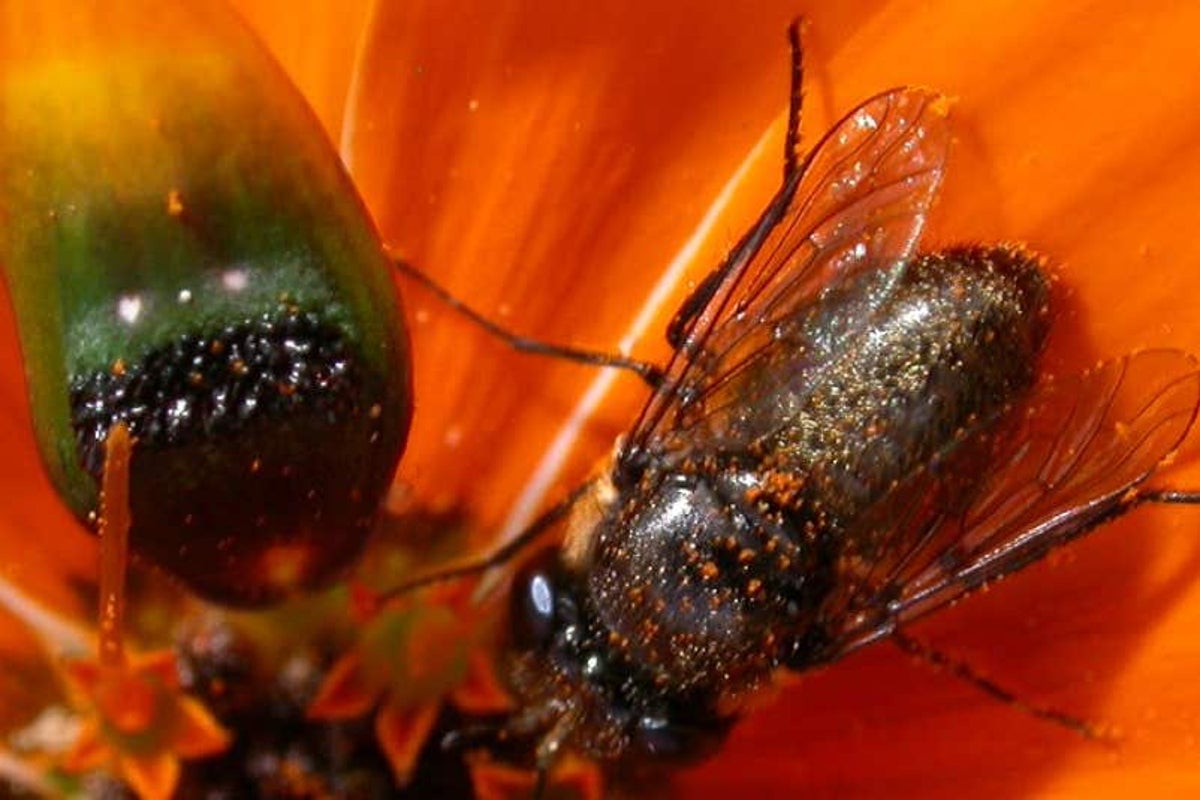
Scientists have discovered how a daisy native to South Africa employs deception by creating fake lady flies to attract males.
Gorteria diffusa is the only daisy known to develop deceptive structures on its petals that look like female flies – complete with hairy bumps and white highlights – something that has intrigued scientists for decades.
Researchers from the University of Cambridge now believe they may have found the answer in three sets of genes in the plant.
These genes are thought to have other functions as well, with one set moving iron around the plant, the second set making root hairs grow, and the third set controlling when flowers are made.
The scientists discovered that the iron-moving genes add the nutrient to the petal’s reddish-purple pigments, changing the colour in the process and making it more fly-like.
The root hair genes were found to make hairs expand on the petal – giving texture, while the third set was associated with making fake flies appear in random positions on the petals.
Professor Beverley Glover, in the University of Cambridge’s Department of Plant Sciences and director of the university’s Botanic Garden, said: “This daisy didn’t evolve a new ‘make a fly’ gene.
“Instead, it did something even cleverer – it brought together existing genes, which already do other things in different parts of the plant, to make a complicated spot on the petals that deceives male flies.”
G. diffusa plants grow in harsh desert environments in South Africa, with only a short rainy season window to produce flowers – creating intense competition to attract insect pollinators.
The researchers said the G. diffusa petals give it an evolutionary advantage by attracting more male flies for pollination.
But they added that this plant is young in evolutionary terms, at around 1.5 to two million years old.
Dr Roman Kellenberger, a postdoctoral researcher in the University of Cambridge’s Department of Plant Sciences, said: “We’d expect that something as complex as a fake fly would take a long time to evolve, involving lots of genes and lots of mutations.
“But actually by bringing together three existing sets of genes it has happened much more quickly.”
While there are other members of the daisy family that make spots on petals, the researchers said they are not very convincing to real flies.
The scientists were also able to work out the order that the fake flies came into being, saying it was colour first, then random positioning, then texture.
Dr Kellenberger said: “It’s almost like evolving a whole new organ in a very short time frame.
“Male flies don’t stay long on flowers with simple spots, but they’re so convinced by these fake flies that they spend extra time trying to mate, and rub off more pollen on to the flower – helping to pollinate it.”
The results are published in the journal Current Biology.







